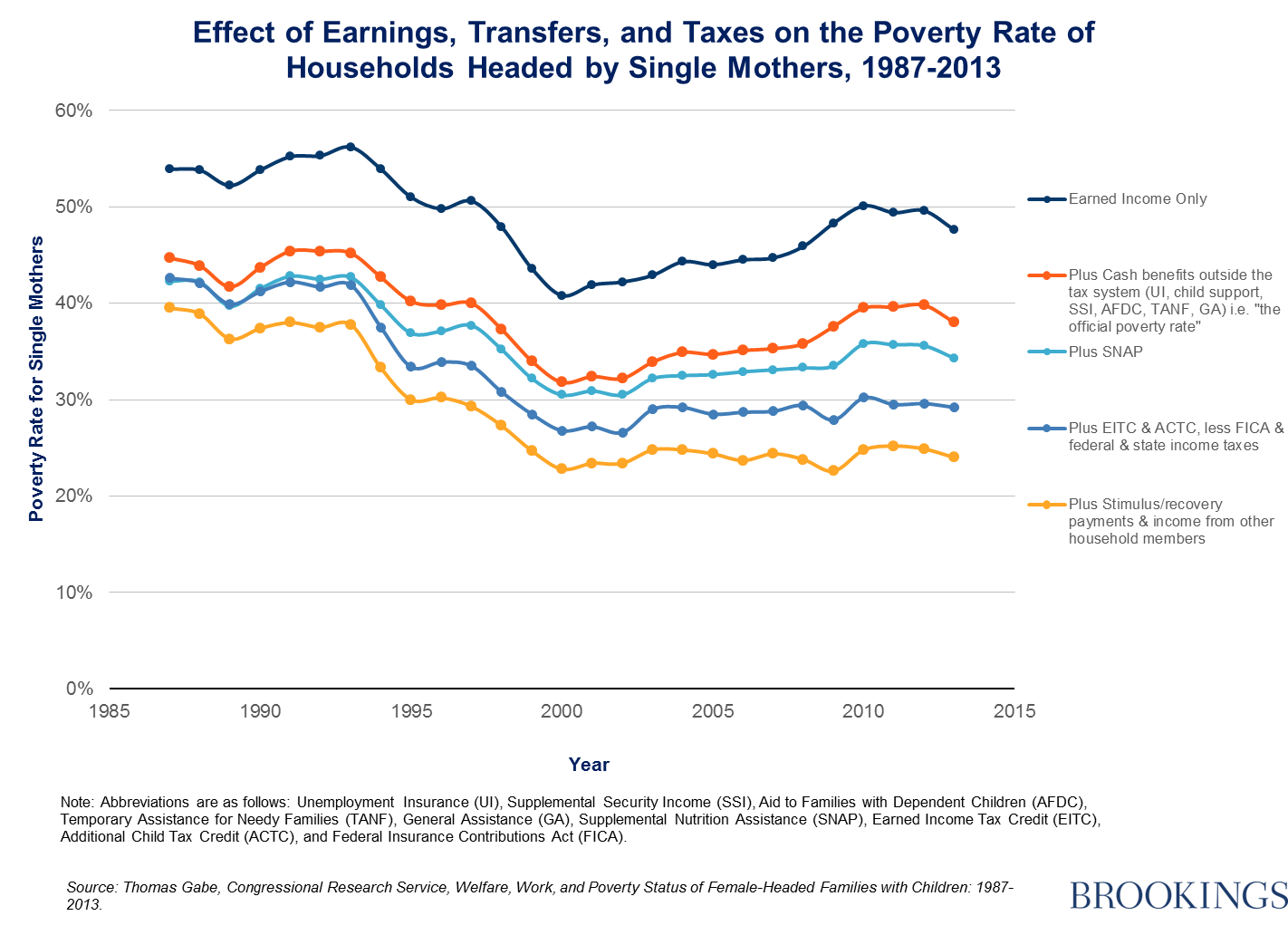In the debate over the best way to tackle poverty, the left argues for benefits to alleviate poverty and its effects, while the right argues for work-based programs to cultivate self-reliance. Here’s the thing: they’re both right. Thankfully, large parts of our safety net include both elements—support programs to raise people’s living standards and incentives to encourage work. As I recently testified before the House Ways and Means Committee, we haven’t won the war on poverty, but this two-pronged approach has substantially reduced poverty rates. The figure below, from a recent report by Thomas Gabe at the Congressional Research Service, shows how the system works.

The mothers most likely to be in poverty are those with little education and little work experience and those who had babies outside marriage. Since roughly the mid-1990s, federal and state welfare policy has encouraged and cajoled these mothers to work with the result that more poor mothers got jobs than ever before. But most of the poor mothers who joined the labor force could only qualify for low-wage jobs. So as the figure shows, the various work support benefits kick in and, taken together, dramatically reduce the poverty rate faced by these mothers and their children. In fact, the programs, many of which are available only to working mothers, reduce the poverty rate by 50 percent, from 48 percent to 24 percent.
The recessions that began in 2001 and 2007 reduced work rates and increased poverty, but even during recessions, the work supports continued to greatly reduce the poverty rate. And following the recessions, exactly as would be expected of mothers attached to the labor force, the mothers’ work rates popped back up and poverty once again began to fall.
Expanding What Works
The work and work-support elements of this system reinforce one another. We saw this after the 1996 welfare reform law greatly boosted employment among these mothers: even though the poverty rate based only on earnings was lower in 2000 than in 1987 because more mothers had earnings, the receipt of work support benefits reduced poverty even more than it had when mothers worked less.
As always, the devil is in the details, but the fact that both conservative and liberal viewpoints play a vital role in reducing poverty should pave the way for more work and less poverty in the future.


Commentary
Better together: Work and work support
February 13, 2015